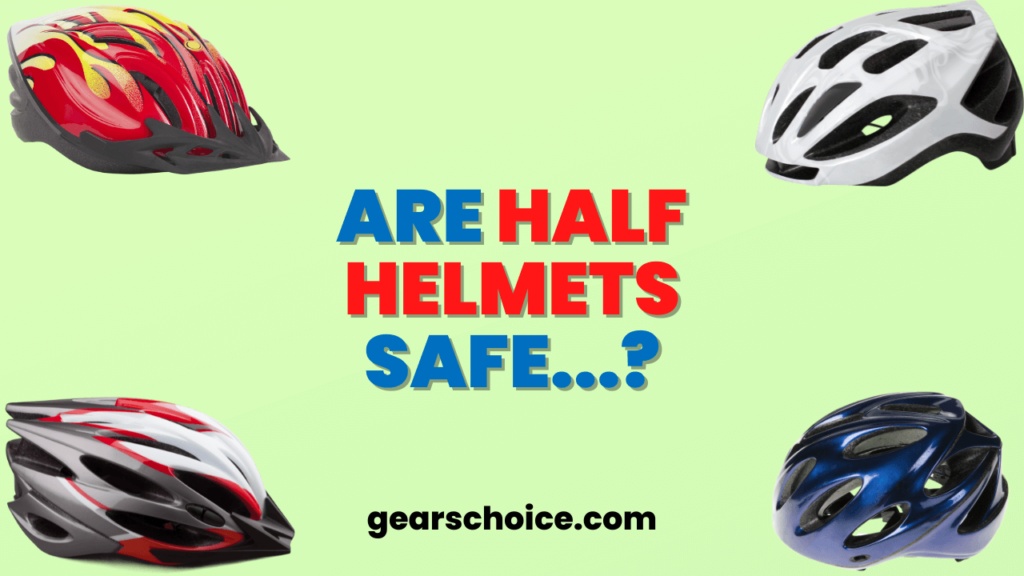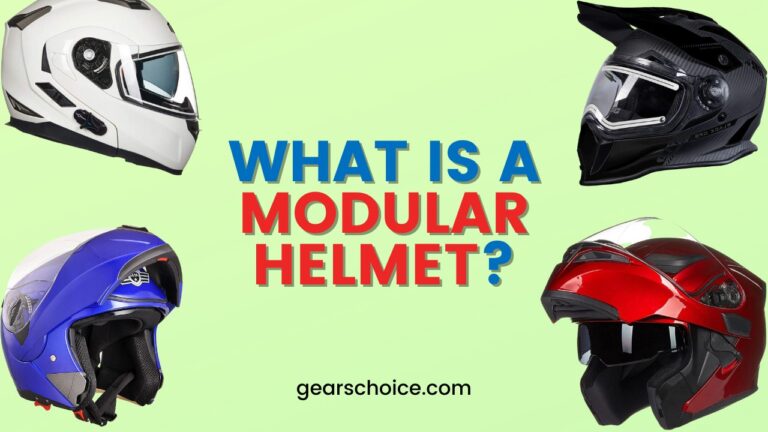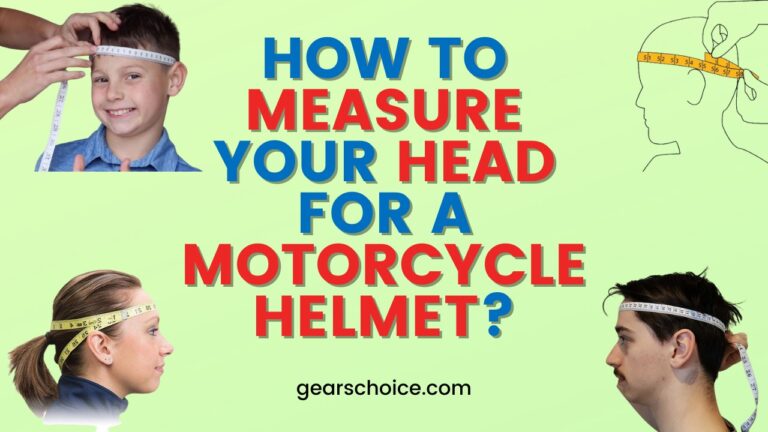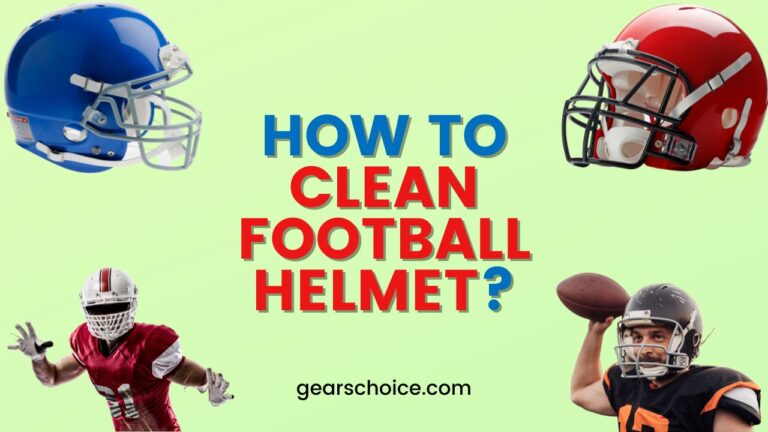Are Half Helmets Safe? 5 Key Factors to Consider Before You Buy
While organizing my garage recently, I stumbled upon two old helmets: a classic full-face helmet from the 2004 and a vintage half-face helmet from the 2006.
This discovery sparked a question about motorcycle safety: Are half helmets safe? The short answer is that half helmets generally offer less protection compared to full-face helmets.
Their design leaves critical areas such as the face and chin exposed, potentially increasing the risk of injury in an accident.
Half helmets may require additional accessories to protect your face and eyes, which can complicate the decision-making process.
It’s essential to understand what you’re buying a half helmet for and to weigh its safety features against those of other helmet types. With a variety of helmets available, making an informed choice is crucial.
In this article, we’ll explore the safety aspects of half helmets in detail to help you make a well-informed decision.

Are Half Helmets Safe?
Motorcycle helmets are mandated by law in most states for rider safety, and they must meet specific safety standards. This includes having a hard exterior shell to withstand impact and a shock-absorbent liner to reduce the force of collisions.
These safety features are crucial for protecting the rider’s head during an accident. When it comes to motorcycle half helmets, their design presents unique safety concerns.
Unlike full-face helmets, half helmets offer limited coverage, leaving large portions of the head, including the face and chin, exposed. This can significantly increase the risk of injury in a crash.
While half helmets do cover the top of the ears, they do not provide the comprehensive protection that a full-face helmet offers.
Therefore, if you prioritize maximum safety, especially for high-speed riding or long trips, a full-face helmet might be a better choice.
How safe are half helmets?
Half helmets are popular among cruiser riders because they allow you to hear your surroundings better and give a stylish look when paired with sunglasses.
They are also known for being cooler and lighter compared to full-face helmets. In terms of safety, half helmets can reduce the risk of serious head injuries by about 36.8% in crashes.
However, half helmets leave your face exposed, which can lead to facial injuries in the event of a collision.
While experienced riders might choose half helmets for comfort and style, it’s important to remember that they don’t offer the same level of protection as full-face helmets.
Full-face helmets provide better coverage against harsh weather conditions like rain and sleet, and they protect your face from flying objects, dust, smoke, and bugs.
No matter how skilled you are, accidents can happen, and it’s crucial to wear protective gear.
Full-face helmets offer more comprehensive protection and might be a better choice for ensuring your safety on the road.
When to use a half helmet?
Half helmets are commonly used by motorcyclists, scooter riders, and people who stay close to home. They are a good choice for short trips and casual rides.
However, if you plan to ride in challenging conditions, like on mountain roads or during heavy rain, you might want to choose a full-face helmet instead.
Full-face helmets offer better protection in these situations. Many experts believe that half helmets provide less protection because they don’t cover as much of your head.
They mainly help protect against cuts and bruises, but they do not offer as much safety as full-face helmets.
Last but not the least, use a half helmet for short, low-risk rides. For longer trips or tougher conditions, consider a full-face helmet for better protection.
Why Buy Half Face Helmets?
If you’re thinking about buying a half-face helmet, here are some key reasons why they might be a good choice.
1. Fit
Half-face helmets are designed to fit comfortably and allow your head to move freely.
Unlike full-face helmets, which can be more restrictive, half-face helmets have minimal coverage, which can be more comfortable for some riders.
They usually have just a simple chin strap to secure them, and some models let you add prescription lenses if needed.
2. Sweat Management
Motorcyclists often sweat a lot, especially at higher speeds. Half-face helmets are lighter and have good airflow, which helps keep you cool.
They typically have a foam layer that provides comfort without being too heavy, and they’re easy to clean.
This foam is durable and doesn’t get in the way of your vision.
3. Airflow
One of the main reasons riders choose half-face helmets is for better airflow.
Their open, round shape helps keep air flowing around your head, preventing wind from hitting your eyes directly.
They often have adjustable vents, so you can control the amount of air and adjust them to fit your comfort level.
4. Cushioning
Half-face helmets have a small liner inside that helps absorb some impact during a crash.
While they can reduce the pain from collisions, they don’t offer as much protection as full-face helmets.
The liner helps spread out the force of an impact, but it’s important to remember that no helmet can guarantee complete safety in every situation.
Overall, half-face helmets provide comfort and good airflow but offer less protection than full-face helmets.
They are a popular choice for those who prefer a lighter, more open design.
What to consider when choosing the best half helmet?
When choosing the best half helmet, you should look at several important factors to ensure you get both style and safety. Here’s what to consider:
1. Safety
Safety is the most important factor. While half helmets do not offer as much protection as full-face helmets, they can still help reduce the risk of head injuries in a crash.
They are best suited for short rides and lower-risk situations. For longer trips or higher speeds, you might want to consider a helmet with more coverage.
2. Helmet Quality
Check the quality of the helmet before you buy it. Look at the materials used, the design, and the overall build.
A well-made helmet should be sturdy enough to protect you in case of an accident and should not easily get damaged from impact.
3. Fit and Shape
Make sure the half helmet fits your head shape properly. Helmets come in different shapes to match different head shapes, like round or oval.
Choose a helmet that matches your head shape to ensure a comfortable and secure fit.
4. Safety Standards
Check if the helmet meets safety standards. For instance, DOT (Department of Transportation) helmets must pass tests for energy absorption, retention, and impact resistance.
They should also provide at least 105 degrees of peripheral vision.
5. Price
You don’t have to spend a fortune to get a good half helmet. There are many affordable options that offer good protection and style.
Make sure you find a helmet that fits your budget while still meeting safety and quality standards.
By considering these factors, you can choose a best half helmet that is stylish, comfortable, and safe for your rides.
Frequently Asked Questions (FAQ’s)
Which is better a half or full-face helmet?
In summary, a half helmet can be a good choice if you’re a cautious rider who travels at lower speeds.
It allows you to enjoy the sights and sounds of your ride more easily than a full-face helmet.
However, for better protection, especially at higher speeds or in risky conditions, a full-face helmet is generally a safer option.
Choosing the right helmet depends on your riding style and safety needs. Think about how and where you ride to make the best choice for your safety and comfort.
What is the safest helmet to wear?
When it comes to safety, full-face helmets are the best choice. They provide the most protection by covering your entire head, face, and chin.
With many types of motorcycle helmets available, choosing a full-face helmet simplifies the decision and ensures you’re getting the highest level of safety.
For the best protection on the road, a full-face helmet is the way to go.
Are skull cap helmets safe?
Helmets like skull caps, brain buckets, and half helmets provide limited protection. They only cover a small part of your head, which means they offer less safety compared to full-face helmets.
While these helmets are popular, they don’t provide as much impact resistance as more protective options.
Ultimately, the choice is yours, but it’s important to consider how much protection you need for your safety.
Wrapping Up
When it comes to riding, safety should always be your top priority. Motorcycle accidents are a major cause of traffic injuries worldwide.
Even if you’re an experienced rider, you should choose your helmet based on the conditions of your ride.
While a half helmet is better than no helmet at all, it doesn’t offer as much protection as a full-face helmet.
It’s a good idea to keep a full-face helmet as a backup for more dangerous rides.
So, are half helmets safe? They offer some protection, but not as much as full-face helmets.
We’d love to hear your thoughts. Please leave a comment below and share your opinion!

Hi, I’m James Dean. My motorbike obsession started at age seven with a 50cc bike, and I’ve been riding ever since.
From motocross in my teens to cruising and snowmobiling today, I’ve got over 15 years of experience.
As a mechanical engineer and passionate rider, I founded gearschoice.com to share my insights and help you find the best motorcycle gear.

![How To Tell If Motorcycle Helmet Is Too Small [Everything Explained] 3 How To Tell If Motorcycle Helmet Is Too Small](https://gearschoice.com/wp-content/uploads/2022/09/How-To-Tell-If-Motorcycle-Helmet-Is-Too-Small-768x432.png)




